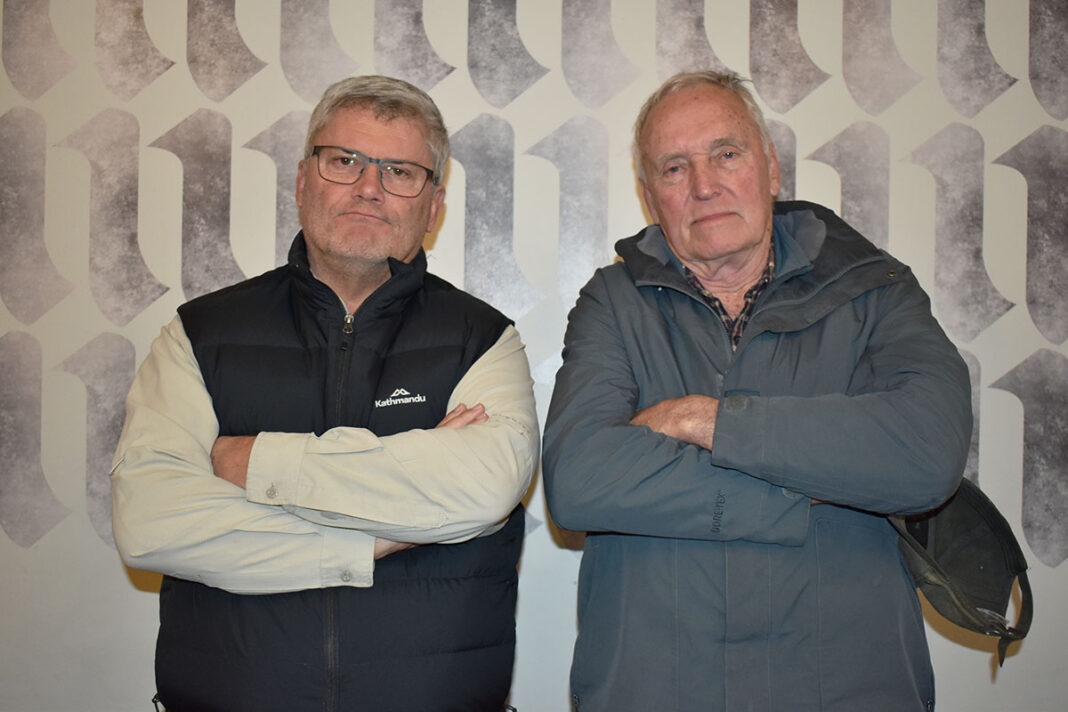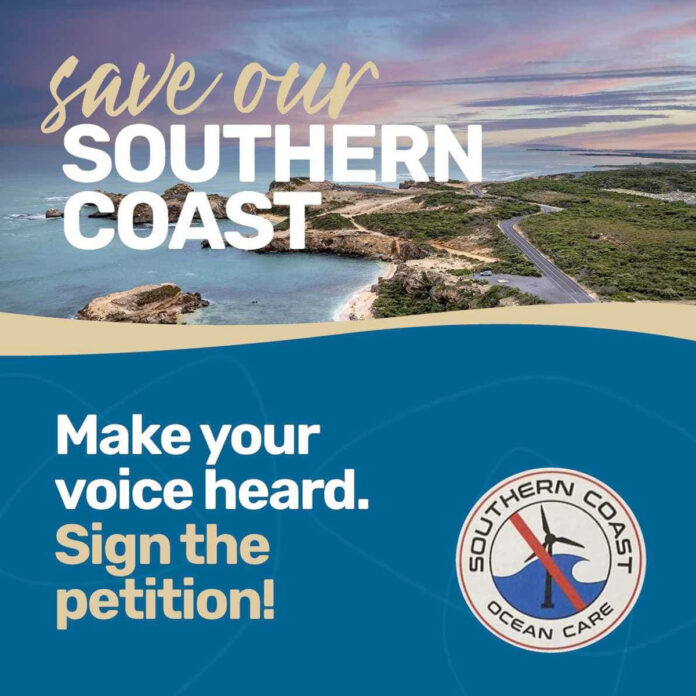Members of a local sea bird watching group have made their concerns known about the proposed Southern Ocean offshore wind zone.
The consultation period for the Southern Ocean offshore wind zone held by Minister for Climate Change and Energy Chris Bowen recently closed.
Minister Bowen will now decide whether the proposed area, which is 300km off the coast from Warrnambool to Port MacDonnell, is suitable for offshore renewable energy developments.
Port MacDonnell Seabirds and Pelagics members Stuart Hull and Collin Rogers are part of a group that have taken over 125 trips across 20 years to the continental shelf off Port MacDonnell to birdwatch.
Mr Hull said careful observation at Port MacDonnell over 20 years has revealed an amazing diversity of 60 seabird species including 14 species of albatross, many of which are at risk of extinction.
“We cannot afford to allow this vitally important foraging zone for pelagic seabirds to be interfered with by building wind farms,” he said.
“Shy Albatross forage when they have young in our waters so if we cut off those waters by building a wind farm then that’s going to affect their ability to feed their young.
“As soon as they (wind farm developers) start their exploration of the area, they are going to disrupt the current ecosystem.”
Mr Rogers said he had observed Wandering Albatross and Royal Albatross in the area which are the two largest seabirds in the world.
“They are moving around mostly in the deeper water along the continental shelf and beyond,” he said.
“Then over the shelf there are a lot of intermediate size, smaller albatross, some from New Zealand, some from the Indian Ocean, some from the Atlantic Ocean.
“They circumnavigate the globe and they come past here, and they feed off what they call the Bonney Upwelling.
“That’s why they congregate in this area, why it would be actual madness to put windfarms in the sea right where they travel.
“This is part of a global flyaway, it’s not just a little piece of local water.”
Mr Rogers said the offshore wind farms would “absolutely” change the flight pattern of the birds leaving them to either avoid the windfarms, get struck or set off a sensor to shut off the windfarms.
“It totally undermines the profitability of the economic basis of doing it,” he said.
“Either they detect these wind farms are there and they do not like it and they move away which happens to some birds like gannets.
“Those that do fly in, they can get struck by these.
“It’s not green, it’s environmentally destructive for the birds in particular but everything else that’s down there too.”
Mr Hull said he was pleased by the State Government’s recommendation for South Australia to be excluded from the Commonwealth’s proposed Southern Ocean offshore wind zone.
“We are really pleased they have come out and said what they have said, we’re just hopeful there’s some influence in Canberra,” he said.




